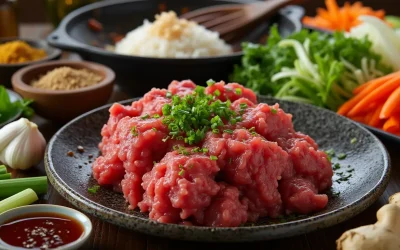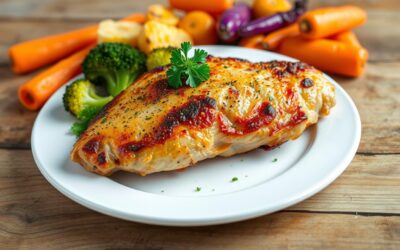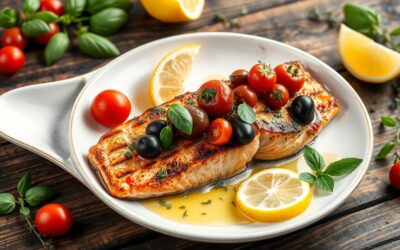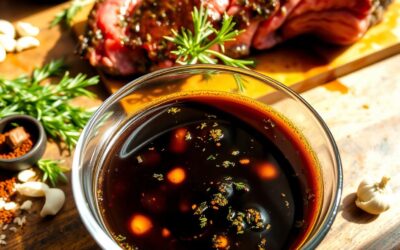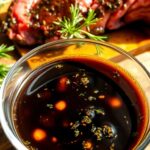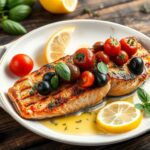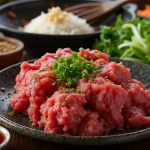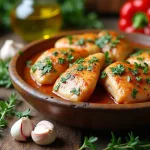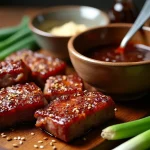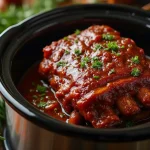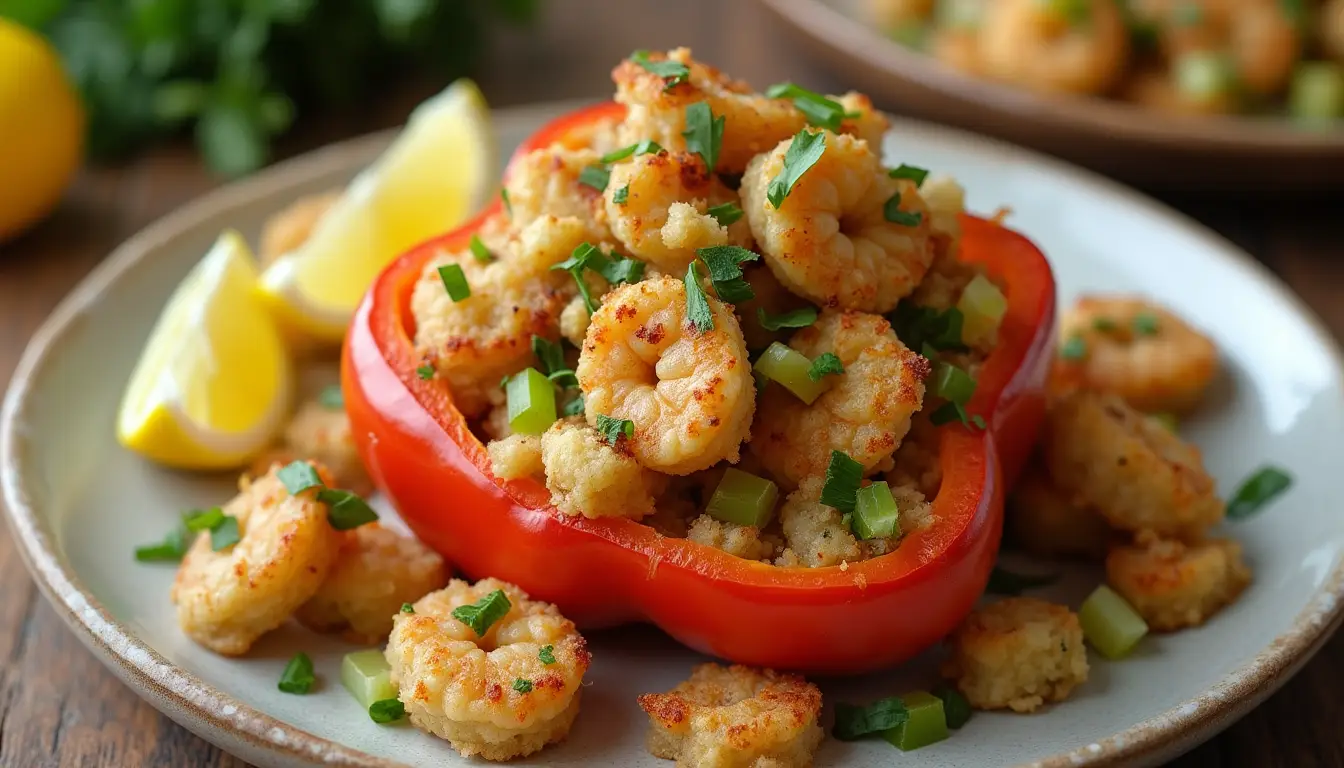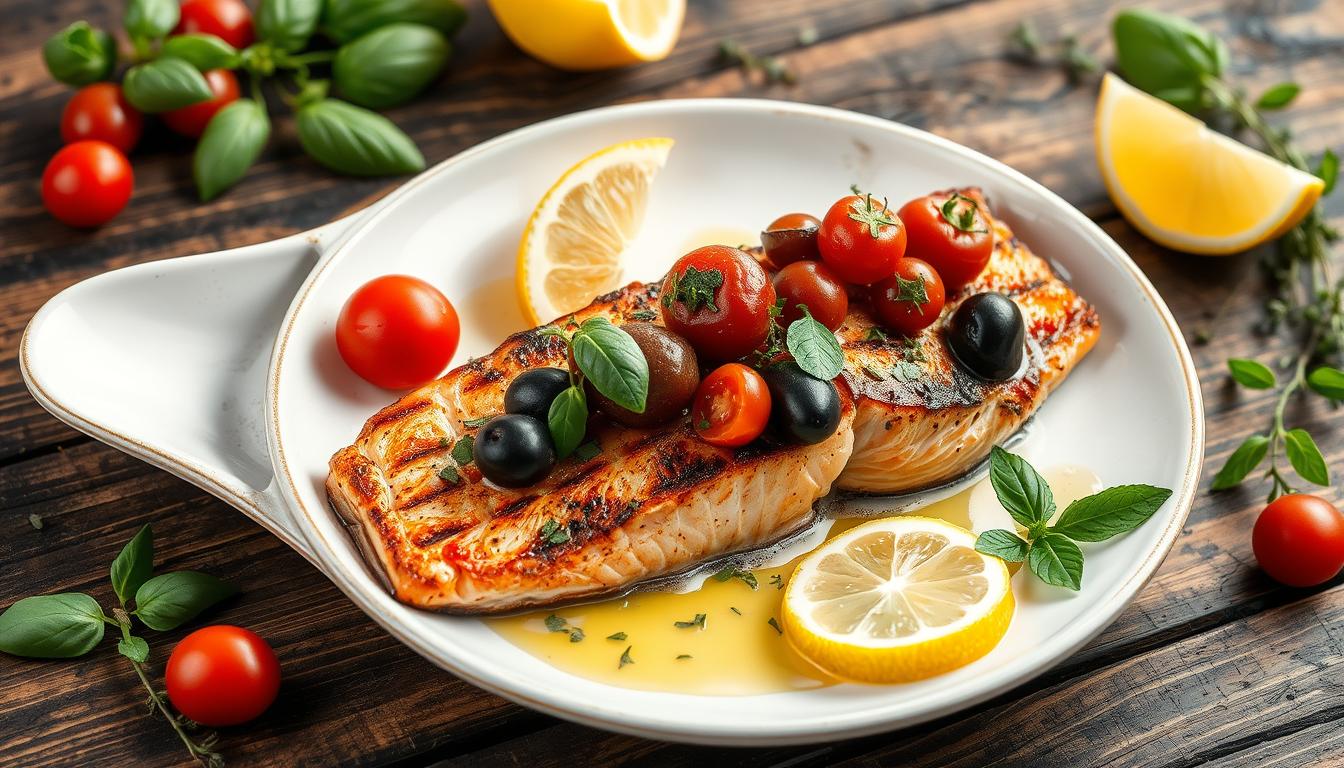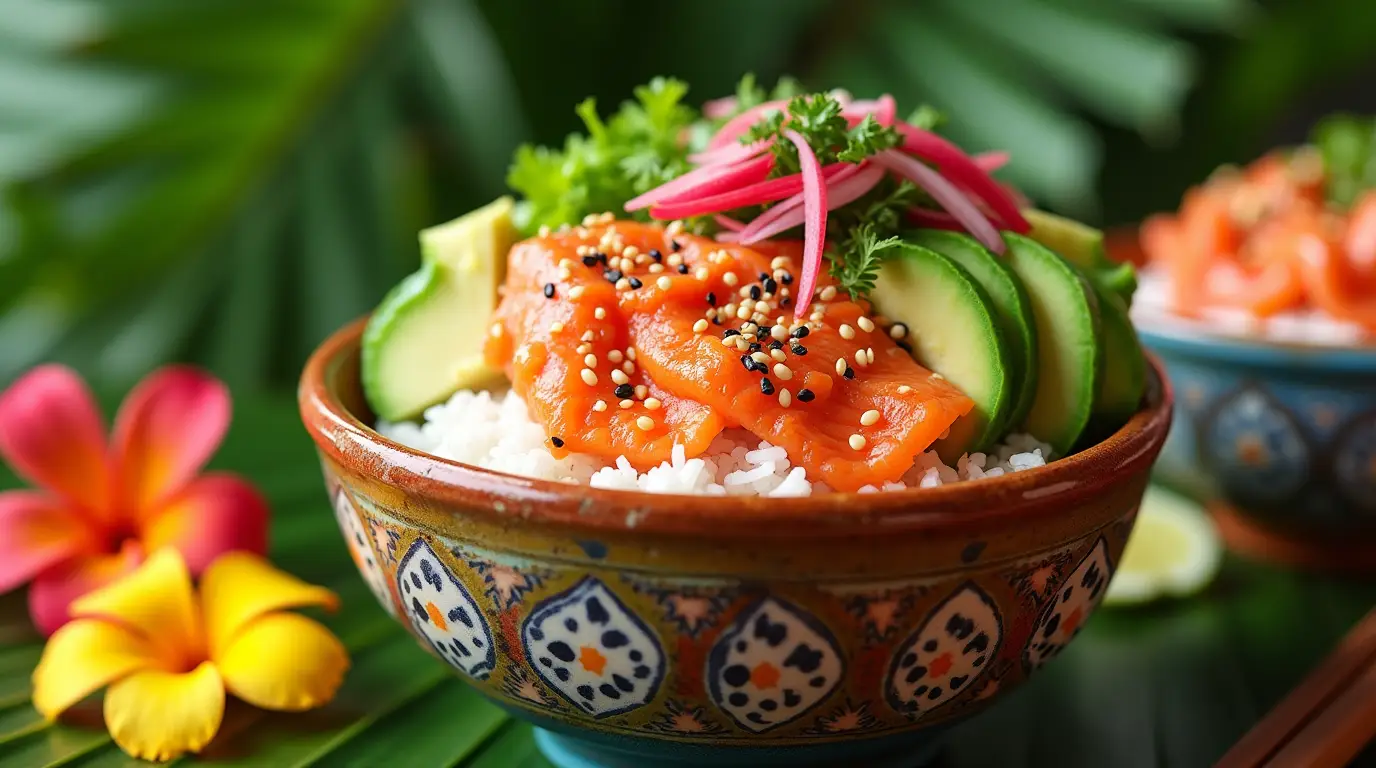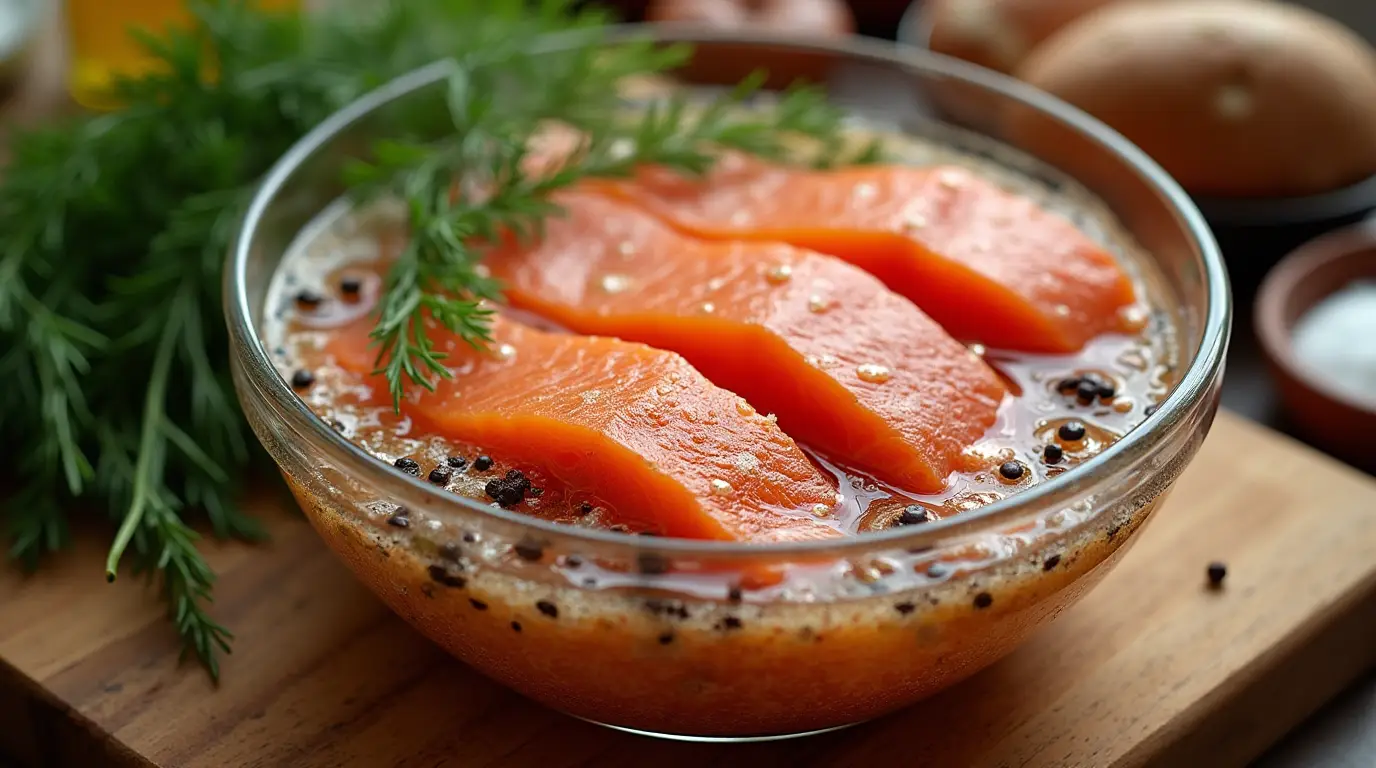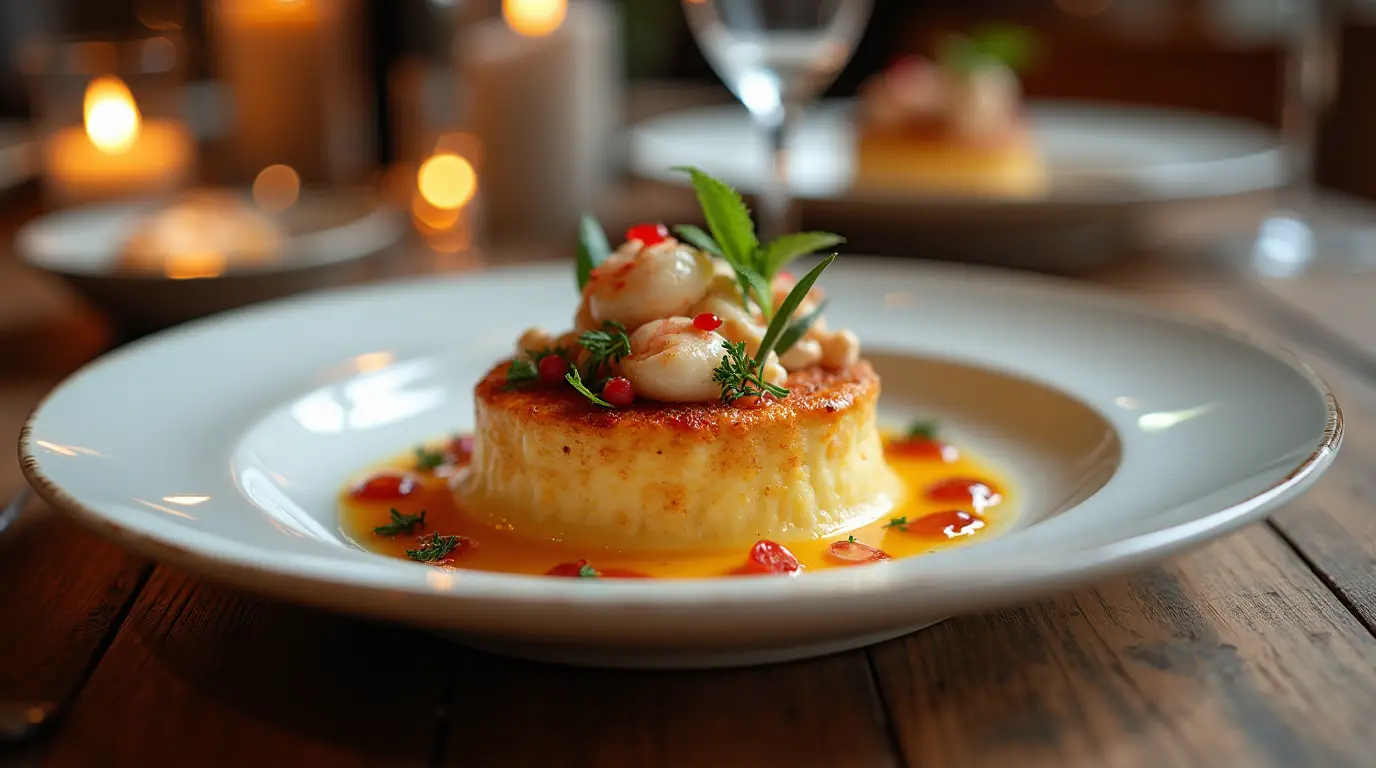There’s something magical about a seafood stuffing recipe. It turns an ordinary meal into an extraordinary culinary experience. I remember the first time I tasted homemade seafood stuffing at my aunt’s coastal home in Massachusetts.
The blend of fresh crab and shrimp with perfectly seasoned breadcrumbs was pure bliss. Whether you’re looking to impress dinner guests or simply craving a rich, flavorful dish, this seafood stuffing recipe will become your new favorite. It’s a versatile creation that brings the essence of coastal cooking right to your table, packed with protein and bursting with oceanic flavors.
From busy home cooks to passionate food enthusiasts, learning how to make seafood stuffing is easier than you might think. With just 50 minutes of preparation time and ingredients that are readily available, you’ll be serving up a restaurant-quality dish that celebrates the bounty of the sea.
Table of Contents
Understanding Seafood Stuffing: A New England Classic
Seafood stuffing is a tasty tradition from New England’s coast. It makes holiday recipes special by adding fresh seafood. Learning about its cultural background and unique taste is a great start.
The Difference Between Stuffing and Dressing
Many think stuffing and dressing are the same, but they’re not. Stuffing goes inside a bird, while dressing is baked alone. Seafood stuffing is usually a dressing, giving you more ways to cook and serve it.
- Stuffing: Cooked inside the bird
- Dressing: Baked in a separate dish
- Seafood version: Typically prepared as a dressing
Why Seafood Stuffing is Special
Seafood stuffing is special because of its mix of ingredients and flavors. Crab and shrimp make it a gourmet dish. It’s a recipe that lets you get creative while staying true to New England’s taste.
History and Cultural Significance
“Seafood stuffing represents more than a recipe—it’s a celebration of coastal culinary traditions.”
Seafood stuffing comes from coastal areas, where seafood is plentiful. Families have shared this recipe for years, adding their own twist. It shows New England’s love for the ocean and its gifts.
Essential Ingredients for Perfect Seafood Stuffing Recipe
To make a tasty seafood stuffing, pick the right ingredients. They should highlight the ocean’s flavors. Your stuffing will be a hit with the perfect mix of fresh seafood and other ingredients.
- Fresh seafood selections:
- Lump crabmeat (1 pound)
- Shrimp (31/35-count size, 1/2 pound)
- Bread base:
- Cornbread stuffing mix (6 ounces)
- Dry breadcrumbs (1/2 cup)
- Flavor enhancers:
- Butter (1/2 cup)
- Chopped vegetables:
- Onion (1/2 cup)
- Celery (1/2 cup)
- Green bell pepper (1/2 cup)
These extra ingredients will make your stuffing even better:
- Cream of mushroom soup (10.5 ounces)
- Chicken broth (14.5 ounces) – or vegetable broth for a pescatarian option
- 1 egg (for binding)
Pro tip: The Lowcountry seafood tradition suggests using fresh, local seafood for the most authentic flavor!
Being flexible is important in this recipe. You can use fresh or imitation crab, depending on what you like and can afford. The goal is to make a dish that honors the seafood traditions of coastal areas.
| Ingredient | Quantity | Notes |
|---|---|---|
| Lump Crabmeat | 1 pound | Fresh or claw meat works well |
| Shrimp | 1/2 pound | 31/35-count size recommended |
| Butter | 2 tablespoons | For cooking seafood |
| Chicken Broth | 14.5 ounces | Add in 1/4 cup increments |
Your seafood stuffing will not only taste great but also be good for you. It has about 143 kcal per serving, with 4g carbs, 18g protein, and 6g fat.
Kitchen Tools and Equipment Needed
Preparing a delicious seafood stuffing needs the right tools. This makes cooking smooth and fun. The right equipment is key to a great dish.
Choosing the right kitchen tools is essential. They help make a seafood stuffing that wows everyone. This guide will get your kitchen ready for this tasty adventure.
Essential Baking Dishes
- 9×13-inch rectangular baking dish
- Ceramic or glass casserole dish
- Non-stick baking sheet
- Heavy-duty aluminum foil
Preparation Tools
- Large mixing bowl
- Sharp chef’s knife
- Cutting board
- Measuring cups and spoons
- Large skillet
Optional Equipment
These tools are not needed but can help a lot:
- Food processor (for homemade breadcrumbs)
- Air fryer (for toasting breadcrumbs)
- Digital kitchen scale
- Instant-read meat thermometer
Pro tip: Invest in quality tools for an easier and more fun seafood stuffing process.
“The right tools can transform an ordinary cooking experience into an extraordinary culinary adventure.” – Culinary Expert
While good equipment is important, your passion and creativity are what truly make a dish special. This is true when making seafood stuffing.
Preparing Your Seafood Components
Creating a great seafood dressing recipe starts with choosing and preparing your seafood. The Lowcountry region in southern South Carolina is a great source of inspiration. It helps make a seafood stuffing that will wow your guests.
For your seafood dressing, use only the freshest, highest-quality ingredients. Begin by picking the best seafood:
- Fresh shrimp (1 lb)
- Jumbo lump crab meat
- Optional scallops
Preparing seafood needs careful attention. Fresh raw shrimp is better than precooked for more flavor and texture. Here’s how to prepare your seafood perfectly:
- Peel and devein the shrimp carefully
- Drain crabmeat well to avoid too much moisture
- Season seafood with Old Bay seasoning
- Sauté seafood for 3-5 minutes
“The secret to an amazing seafood dressing is using the freshest ingredients possible.” – Lowcountry Chef
Pro tip: If using canned crabmeat or imitation crab, make sure it’s well-drained. You can also add:
- Lemon juice
- White wine
- Fresh herbs (parsley, dill, tarragon)
By focusing on these preparation steps, your seafood dressing will stand out. It will capture the spirit of Lowcountry cooking.
Creating the Perfect Breadcrumb Base
Making a great cornbread dressing with seafood starts with the right breadcrumbs. Your choice can change the dish’s texture and taste. It can turn a simple meal into a feast.
Choosing the right breadcrumbs is key. You can go for store-bought or make your own. Both options have their own benefits.
Choosing Between Panko and Traditional Breadcrumbs
What breadcrumbs you pick affects the dish’s texture and taste. Here’s what to consider:
- Panko breadcrumbs: Lighter, crispier texture
- Traditional breadcrumbs: Denser, more compact consistency
- Gluten-free alternatives: 1 cup recommended for dietary needs
Making Homemade Breadcrumbs
Homemade breadcrumbs can take your seafood stuffing to the next level. Here’s how to do it:
- Select day-old bread for optimal dryness
- Cut bread into small, uniform pieces
- Process bread in a food processor
- Toast breadcrumbs until golden brown
“The quality of your breadcrumbs can make or break your seafood stuffing recipe.” – Coastal Cuisine Expert
| Breadcrumb Type | Texture | Best Used For |
|---|---|---|
| Panko | Ultra-crispy | Light, airy seafood dressing |
| Traditional | Dense | Rich, hearty seafood stuffing |
| Gluten-Free | Varies | Inclusive cooking options |
Pro tip: Toast your breadcrumbs in a skillet or oven for 3-5 minutes to enhance flavor and achieve a perfect golden color.
Step-by-Step Mixing Instructions
Making seafood stuffing needs precision and care. The mixing turns simple ingredients into a tasty dish that will wow your guests. Begin by collecting fresh seafood, like big shrimp and lump crabmeat.
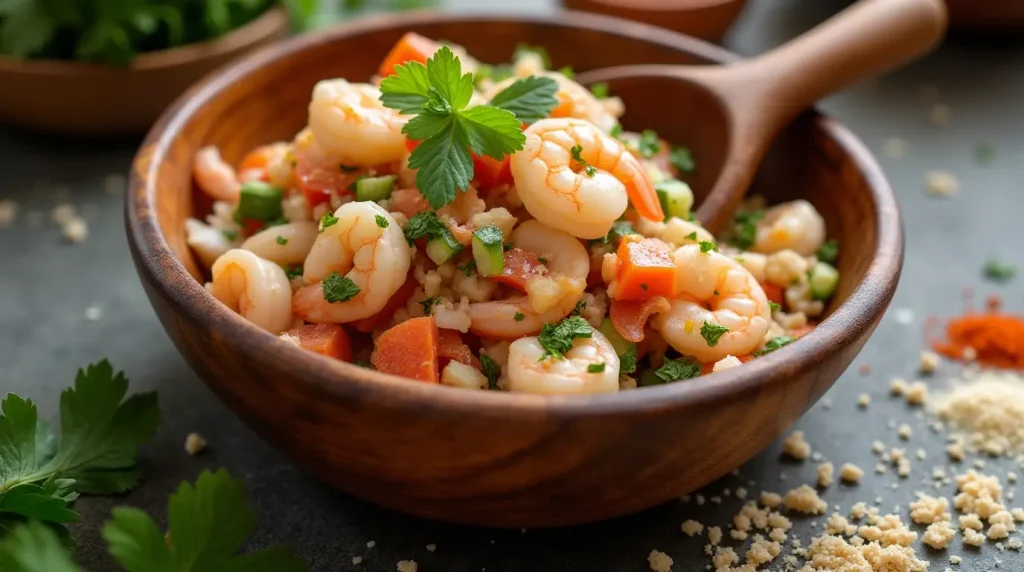
- Sauté seafood and veggies in butter until they’re soft.
- Mix cornbread stuffing with breadcrumbs in a big bowl.
- Combine cooked seafood and veggies into the bowl.
- Add cream of mushroom soup and chicken broth.
- Mix until everything is well combined.
Pro tip: Let your seafood stuffing rest for about 15 minutes before baking. This helps flavors blend and makes the texture better.
“The secret to amazing seafood stuffing is in the careful mixing and quality of ingredients” – Coastal Cuisine Expert
When mixing, aim for a moist but not soggy texture. Use a gentle folding motion to keep seafood pieces whole. You want a mix that shows off each ingredient’s taste.
Use large shrimp (15/20 count) and fresh lump crabmeat for the best taste. Spread the mix evenly in your baking dish. This ensures it cooks well and tastes great in every bite.
Proper Baking Techniques and Temperature Guide
Baking your seafood stuffing recipe right is all about precision. The right temperature and technique can make your dish amazing.
To make perfect seafood stuffing, you need to know some key baking tips. These tips ensure your dish is both safe and tasty.
Optimal Temperature Settings
Seafood stuffing needs careful temperature control. The best baking range is between 350°F and 375°F. This range helps cook the stuffing evenly and keeps the seafood tender.
| Baking Temperature | Cooking Time | Expected Result |
|---|---|---|
| 350°F | 25-30 minutes | Golden, crispy top with moist interior |
| 375°F | 20-25 minutes | Faster cooking with slightly crispier edges |
Timing Guidelines for Perfect Doneness
- Bake for approximately 25-30 minutes
- Check internal temperature reaches 145°F
- Look for a light golden-brown surface
Visual Cues for Seafood Stuffing Perfection
When your seafood stuffing is done, it will look like this:
- Crispy, golden-brown top layer
- Slightly puffed appearance
- Moist but not wet texture
“The secret to great seafood stuffing is patience and precision in baking.” – Coastal Cuisine Expert
Also, remember that your seafood stuffing will grow by about 25% while baking. So, pick a baking dish that’s big enough to hold it.
Make-Ahead and Storage Tips
Preparing your seafood dressing recipe ahead of time can save you valuable kitchen time and reduce stress during meal preparation. The key is understanding how to properly store and reheat your delicious seafood stuffing.
When storing your seafood dressing, follow these essential guidelines:
- Store in an airtight container to maintain freshness
- Refrigerate within 2 hours of cooking
- Keep refrigerated for up to 4 days
- Ensure temperature stays below 40°F to prevent bacterial growth
Reheating your seafood stuffing requires careful attention to maintain its texture and flavor:
- Preheat oven to 375°F
- Cover dish with aluminum foil to prevent drying
- Heat until internal temperature reaches 165°F
- Check with a food thermometer for safety
Pro tip: Freeze your seafood dressing for longer storage. Properly packaged, it can last up to 3 months in the freezer.
“The secret to great seafood stuffing is not just in the cooking, but in the careful storage and reheating.” – Coastal Cuisine Expert
Creative ways to repurpose leftover seafood dressing include:
- Stuffing for bell peppers
- Topping for baked fish
- Filling for savory crepes
- Mixed into a seafood salad
Remember, your homemade seafood dressing recipe is a versatile dish that can be enjoyed well beyond its initial serving.
Nutritional Benefits and Dietary Considerations
Your seafood stuffing recipe is not only tasty—it’s also very nutritious. It combines seafood with other ingredients to offer health benefits and taste.
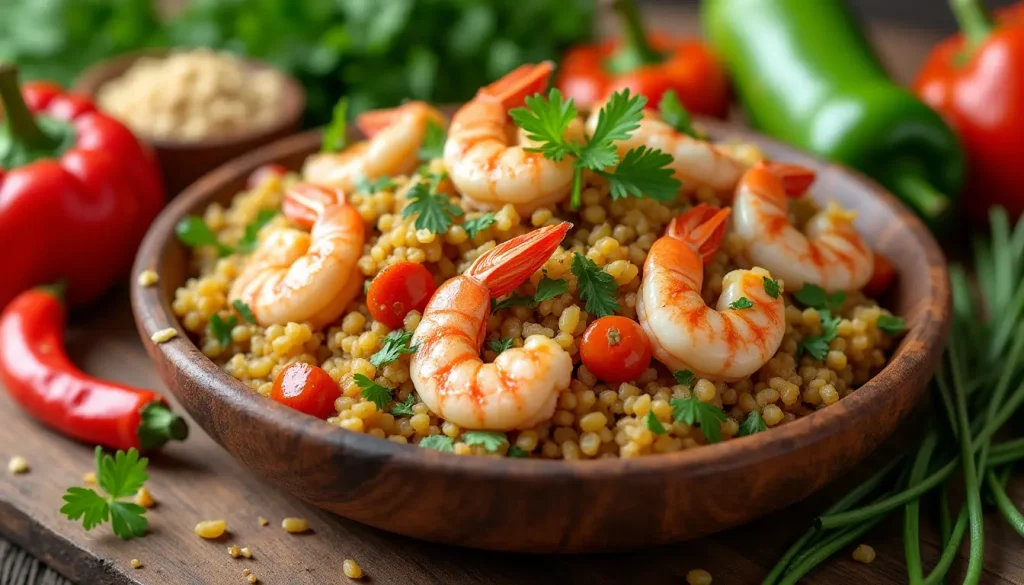
This recipe is a great source of nutrients that help keep you healthy. Fish like salmon and cod are key. They provide:
Health Benefits of Seafood Stuffing
Studies show that seafood is very good for you. The American Heart Association says to eat at least 8 ounces of fish a week. This helps your heart stay healthy.
| Nutrient | Health Impact |
|---|---|
| Omega-3 Fatty Acids | Reduces inflammation, supports heart health |
| Protein | Supports muscle development and repair |
| Vitamin D | Strengthens bone health and immune system |
Dietary Modifications
You can make your seafood stuffing recipe fit different diets:
- Gluten-Free Option: Use gluten-free breadcrumbs or crackers
- Dairy-Free Variation: Substitute plant-based butter
- Pescatarian Friendly: Replace chicken broth with vegetable broth
“Eating seafood is not just about flavor, but about nourishing your body with essential nutrients.” – Nutrition Expert
Knowing what’s in your seafood stuffing recipe lets you enjoy a meal that’s good for you. It’s both delicious and healthy.
Serving Suggestions and Pairings
Your seafood cornbread dressing deserves the perfect accompaniment. Seasonal pairings can turn this classic dish into a memorable meal. It will delight your taste buds and impress your guests.
For an exceptional culinary journey, consider these serving suggestions:
- Summer Serving: Pair with grilled vegetable medley
- Winter Comfort: Serve alongside roasted root vegetables
- Classic Combinations: Match with cranberry sauce and buttery rolls
Your cornbread dressing with seafood shines brightest with the right side dishes. Wine lovers might enjoy a crisp Sauvignon Blanc or a buttery Chardonnay. These wines enhance the seafood’s delicate flavors.
“A great seafood dressing is not just a side dish, it’s the star of the meal!” – Southern Culinary Tradition
Pro tips for serving include:
- Garnish with fresh lemon wedges
- Sprinkle Cajun seasoning for extra kick
- Serve warm for maximum flavor enjoyment
Whether it’s a summer gathering or a winter feast, your seafood cornbread dressing will be the centerpiece. It’s the dish everyone will remember.
Troubleshooting Common Problems
Learning how to make seafood stuffing can come with a few hitches. But, most problems have easy fixes that can make your dish outstanding.
Moisture is essential for the perfect seafood stuffing. Here are some key troubleshooting tips:
- Always pat seafood dry before mixing to prevent excess liquid
- Avoid overloading the stuffing with too many ingredients
- Maintain the proper liquid-to-bread ratio
If your seafood stuffing feels too dry, here are some quick solutions:
- Add small amounts of seafood stock gradually
- Mix in extra breadcrumbs to absorb excess moisture
- Incorporate softened butter for richness
“The secret to perfect seafood stuffing is balancing moisture and texture.” – Culinary Expert
Temperature and cooking method are vital for making seafood stuffing right. Preheat your baking sheet for a crispy bottom. Use non-stick foil for easy cleanup.
| Problem | Solution |
|---|---|
| Soggy Stuffing | Reduce liquid, use drier breadcrumbs |
| Dry Stuffing | Add broth or melted butter |
| Uneven Cooking | Spread stuffing evenly, check internal temperature |
Pro tip: Always aim for a golden-brown top and ensure your seafood is cooked to a safe internal temperature.
Conclusion
Your seafood stuffing recipe is more than just a dish. It’s a journey through Southern coastal traditions. Whether for a holiday or a casual dinner, it brings a taste of regional cuisine to your table.
This recipe is versatile and adaptable. You can mix different seafood like shrimp, crab, and scallops. The Cajun Trinity of onions, bell peppers, and celery adds a bold flavor that will wow your guests.
This seafood dressing is a celebration of fresh ingredients and cooking traditions. By mastering it, you’re keeping a delicious part of American culinary history alive. Enjoy it all year round.
Always store leftovers right and feel free to add your own twist. Your seafood stuffing journey is just starting. The possibilities are endless, just like the Gulf Coast.


